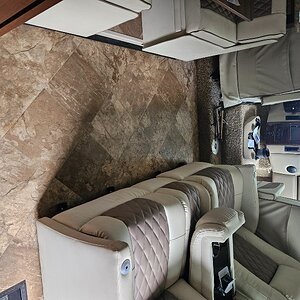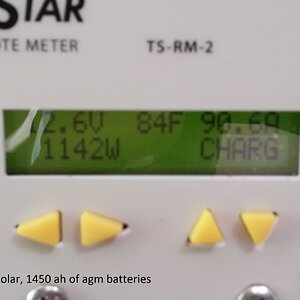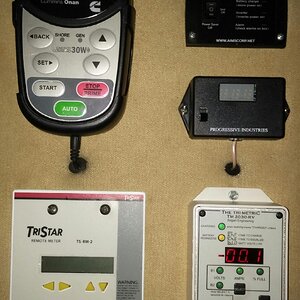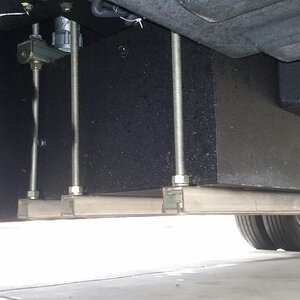GypsyR
RVF VIP
- Joined
- Mar 15, 2021
- Messages
- 344
- Location
- upstate SC
- RV Year
- 1993
- RV Make
- Newmar
- RV Model
- Kountry Aire
- RV Length
- 38 feet
- Chassis
- F53
- Engine
- 7.5
- TOW/TOAD
- Matrix
- Fulltimer
- No
They had "push button start" in the 1930's. Only the "button" was in the floor and you pushed it with your foot after turning the ignition switch on. In later years it was a redneck repair. When for some reason the ignition switch in the column quit working and the owner didn't feel like doing a proper repair involving a teardown of the steering column they would often just add a button switch to bypass the original setup. A very popular modification on old farm trucks.
In later years manufacturers decided computer controls should override what the operator commanded during engine cranking to some degree. In my wife's old Buick turning the key only signaled to the computer that she wanted to start the engine. If something was determined to be wrong, nothing happened. If for some reason the engine was slow to start, the computer would keep cranking it even if you let off the key. Because she was never actually "cranking" it with the key switch in the first place.
The next fashionable step was to eliminate the key, since with various electrical bits locking down the car it really wasn't having much function anyway. So a fob to let the computer know you were the vehicle owner (hopefully) and a button to let it know you wanted to use your machine. The downside to this is since there was no longer any mechanical interaction, thieves could simply steal your stuff by fooling the computer. I see where Toyota (for one) has decided to go retro on this and their latest layer of vehicle security is an actual physical key that has to be mechanically used in the car. I can see this as foiling an entire generation of modern car thieves. The same ones who are stymied by a car having a manual transmission.
In short, push buttons are just about style. Providing the same functionality as about any other setup. You can start some vehicles with your cellphone from miles away. Because in any modern vehicle you aren't starting it anyway. You are merely communicating to its computer in some fashion or another that you want it to start.
In later years manufacturers decided computer controls should override what the operator commanded during engine cranking to some degree. In my wife's old Buick turning the key only signaled to the computer that she wanted to start the engine. If something was determined to be wrong, nothing happened. If for some reason the engine was slow to start, the computer would keep cranking it even if you let off the key. Because she was never actually "cranking" it with the key switch in the first place.
The next fashionable step was to eliminate the key, since with various electrical bits locking down the car it really wasn't having much function anyway. So a fob to let the computer know you were the vehicle owner (hopefully) and a button to let it know you wanted to use your machine. The downside to this is since there was no longer any mechanical interaction, thieves could simply steal your stuff by fooling the computer. I see where Toyota (for one) has decided to go retro on this and their latest layer of vehicle security is an actual physical key that has to be mechanically used in the car. I can see this as foiling an entire generation of modern car thieves. The same ones who are stymied by a car having a manual transmission.
In short, push buttons are just about style. Providing the same functionality as about any other setup. You can start some vehicles with your cellphone from miles away. Because in any modern vehicle you aren't starting it anyway. You are merely communicating to its computer in some fashion or another that you want it to start.












